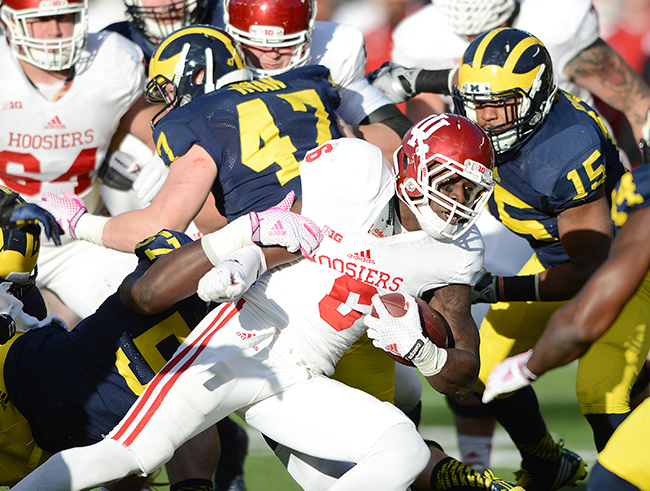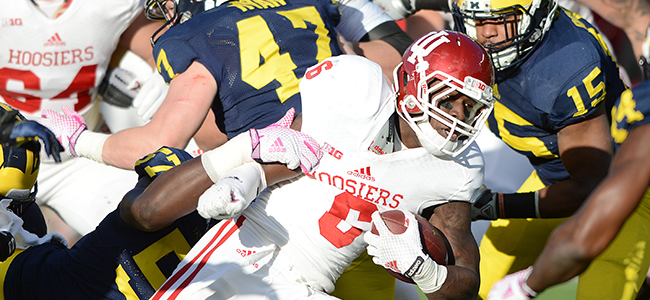
Indiana University running back Tevin Coleman is swarmed by Michigan tacklers in a 2014 game at Michigan Stadium. An All-American, Coleman finished seventh in the Heisman Trophy voting but wasn’t drafted by the NFL until the third round, the 73rd player overall. Photo by Mike Dickbernd/IU Athletics
BY MIKE LEONARD
Renowned sportswriter and commentator Frank Deford is unsparing in his criticism of intercollegiate athletics. “It is an inequitable system. It is immoral, un-American, and can’t be justified in any form,” he tells Bloom.
“Look at the money we make off predominantly poor black kids,” former Louisiana State University basketball coach Dale Brown has said. “We’re the whoremasters.”
The Big Ten Conference’s own, in-depth report, released last April, is almost breathtaking in its assessment of the current state of college sports. “We are at a critical moment in the evolution of intercollegiate athletics. Intense pressure has been brought to bear by media scrutiny, Congressional scrutiny, litigation, and unionization efforts. Central to much of the criticism is the notion, particularly in the sports of football and men’s basketball, that the purported educational mission of intercollegiate athletics is a façade — that the true mission is to make money off the efforts of players who ‘get nothing’ and serve as minor leagues for the NFL and NBA.”
The report, Education First, Athletics Second, concludes, “Disagree as we may with such an assertion, the importance of criticism cannot be overstated. If we cannot defend — through an examination of actions and results as opposed to words — that education is the paramount factor in our decision-making process (rivaled only by the health and safety of our student-athletes), then the enterprise stands as a house of cards.”
It’s a tall stack of cards. The NCAA’s revenue for 2012–13 (the most recent, audited figure) was $912.8 million. The money generated by the Football Bowl Subdivision (formerly called Division 1-A) was $3.4 billion in 2013, according to Business Insider.











